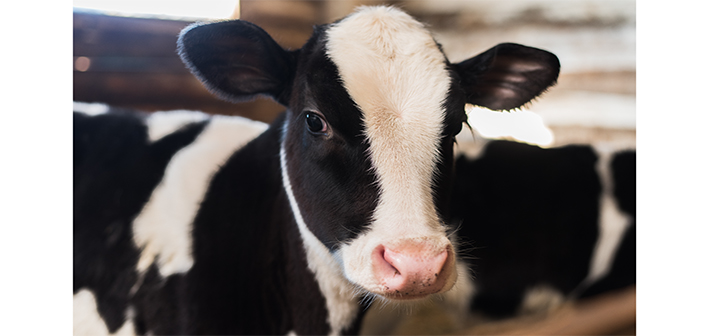A new study looking at colostrum hygiene on British dairy farms has shown that by making a few simple changes to cleaning protocols, farmers could significantly minimise the risk of disease in calves.
The study, published in Frontiers in Veterinary Medicine and led by experts from the School of Veterinary Medicine and Sciences at the University of Nottingham, is one of the first to look at colostrum hygiene in Great Britain.
Calves are born with zero immunity and rely entirely on colostrum to gain immunity against disease. It is essential that calves receive an adequate quantity of good quality colostrum as soon as possible after birth. High bacteria levels in colostrum can both increase the chances of calf scour and reduce the levels of immunity absorbed.
Several studies have provided estimates of colostrum hygiene at a national level, although to date this has not been conducted in Great Britain. In this new study, experts analysed data from 328 colostrum samples from 56 British dairy farms.
Samples collected from collection and feeding equipment had higher levels of bacteria than those collected directly from the cows’ teat, suggesting that whilst colostrum from the cow is relatively low in bacterial levels, improperly cleaned equipment can be a major source of bacterial contamination. Over one third of samples collected from collection or feeding equipment were over the threshold for high bacterial levels and represent a significant risk to the health of calves.
Dr Robert Hyde, one of the researchers on the study, said: “By analysing colostrum collection protocols on the farms, we were able to identify a small number of management practices likely to have a substantial impact on colostrum hygiene for the majority of farms.
“For example, the use of scalding hot water to clean collection and feeding equipment could reduce bacteria levels by over 90% compared with using cold water only. Less than half of farms used scalding hot water to clean colostrum collection and feeding equipment, suggesting there are a large number of farms that could make this simple change.”
Key recommendations based on the research to reduce bacterial levels in colostrum suggest protocols should include the cleaning of colostrum collection and feeding equipment after every use with hot water as opposed to cold water, and hypochlorite or peracetic acid as opposed to water or parlour wash.
Cows’ teats should be prepared with a pre-milking teat disinfectant and wiped with a clean, dry paper towel prior to colostrum collection, and colostrum should be pasteurised where possible, the research recommended.


